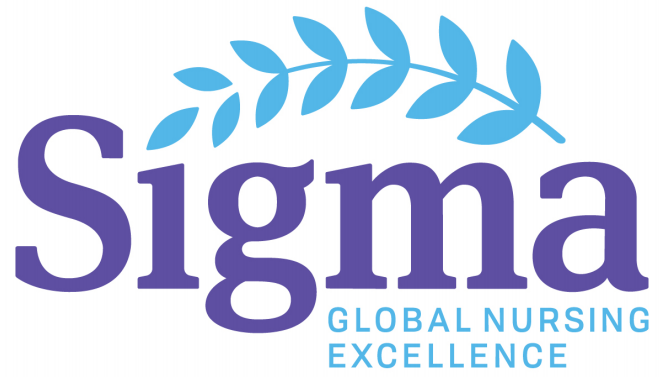Presenter Classification
Graduate Student
Presentation Type
Poster Presentation
Publication Date
4-14-2022
Start Date
14-4-2022 3:40 PM
End Date
14-4-2022 4:15 PM
Keywords
sexual health history
Abstract Type
Quality Improvement/Process Improvement Project
Abstract
Abstract
Purpose: With the US reporting 20 million newly diagnosed STI/HIV cases annually, clinical guideline compliance and EBP recommendation implementation necessitate provider practice changes for high-quality routine sexual and reproductive health services. The project's purpose was to improve sexual health history-taking (SHH) and documentation in a private primary care practice (PPCP) serving high-risk populations. The DNP project aims to determine the effect of conducting a 30-minute educational session and implementing the CDC's 5Ps on a PCP's clinical guideline adherence to SHH recommendations and documentation with patients presenting for annual wellness exams, well-woman exams, family/contraceptive counseling, or acute urogenital complaints in an urban, southeastern PPCP.
Methodology: The quality improvement (QI) project implemented a standardized clinical practice change using the Stetler model's practitioner-oriented knowledge translation design. PPCP-employed NPs (n = 3) completed anonymous pre-/post-implementation surveys using SurveyMonkey, received educational resources, and implemented the CDC's 5Ps SHH tool for clinically appropriate patient encounters identified by eligible ICD-10 codes. Athena's Report Builder compiled data on SHH completion/EMR documentation and providers' intervention compliance from 2-weeks before and 2-weeks after implementation.
Results: Over the four-week project period, a total of n = 1,031 EMR charts [pre-implementation (n = 513)/post-implementation (n = 518)] were reviewed for SHH completion/EMR documentation. Analysis of eligible encounters’ charts showed significant improvement in post-implementation SHH completion/EMR documentation rates (37% in pre-intervention; 82% in post-intervention). The chi-square test findings [X2 (1, N = 1031) = 43.637, p < .01] displayed a significant relation between the variables, indicating an increased likelihood of sexual health history EMR documentation by implementing the CDC'S 5Ps SHH tool. Provider survey results indicated providers support implementation and routine clinical practice of the CDC's 5Ps.
Limitations: Provider sample size (n =3), geographical location, demographics served, private ownership, and SUD treatment center association limit the study's generalizability.
Implications for Practice: The PPCP’s SHH tool availability for clinically relevant encounters increased SHH EMR documentation completion and frequency rates––utilizing the brief, cost-effective intervention for evaluating sexual health risks and behaviors to decrease the likelihood of adverse outcomes. Through positive, nonjudgmental sexual health information acquisition, providers can better facilitate difficult conversations with patients, promote sexual health awareness, and improve STI/HIV screening/treatment rates in a private primary care practice setting.
Keywords: sexual health history
Presenter Photo
Included in
Sexual Health History Screening Implementation for Providing Quality Clinical Services in Primary Care: A Quality Improvement Project
Abstract
Purpose: With the US reporting 20 million newly diagnosed STI/HIV cases annually, clinical guideline compliance and EBP recommendation implementation necessitate provider practice changes for high-quality routine sexual and reproductive health services. The project's purpose was to improve sexual health history-taking (SHH) and documentation in a private primary care practice (PPCP) serving high-risk populations. The DNP project aims to determine the effect of conducting a 30-minute educational session and implementing the CDC's 5Ps on a PCP's clinical guideline adherence to SHH recommendations and documentation with patients presenting for annual wellness exams, well-woman exams, family/contraceptive counseling, or acute urogenital complaints in an urban, southeastern PPCP.
Methodology: The quality improvement (QI) project implemented a standardized clinical practice change using the Stetler model's practitioner-oriented knowledge translation design. PPCP-employed NPs (n = 3) completed anonymous pre-/post-implementation surveys using SurveyMonkey, received educational resources, and implemented the CDC's 5Ps SHH tool for clinically appropriate patient encounters identified by eligible ICD-10 codes. Athena's Report Builder compiled data on SHH completion/EMR documentation and providers' intervention compliance from 2-weeks before and 2-weeks after implementation.
Results: Over the four-week project period, a total of n = 1,031 EMR charts [pre-implementation (n = 513)/post-implementation (n = 518)] were reviewed for SHH completion/EMR documentation. Analysis of eligible encounters’ charts showed significant improvement in post-implementation SHH completion/EMR documentation rates (37% in pre-intervention; 82% in post-intervention). The chi-square test findings [X2 (1, N = 1031) = 43.637, p < .01] displayed a significant relation between the variables, indicating an increased likelihood of sexual health history EMR documentation by implementing the CDC'S 5Ps SHH tool. Provider survey results indicated providers support implementation and routine clinical practice of the CDC's 5Ps.
Limitations: Provider sample size (n =3), geographical location, demographics served, private ownership, and SUD treatment center association limit the study's generalizability.
Implications for Practice: The PPCP’s SHH tool availability for clinically relevant encounters increased SHH EMR documentation completion and frequency rates––utilizing the brief, cost-effective intervention for evaluating sexual health risks and behaviors to decrease the likelihood of adverse outcomes. Through positive, nonjudgmental sexual health information acquisition, providers can better facilitate difficult conversations with patients, promote sexual health awareness, and improve STI/HIV screening/treatment rates in a private primary care practice setting.
Keywords: sexual health history

